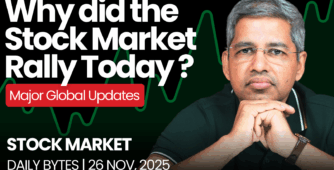
The year is almost at its end, and the last four to five days have been extremely dull in the markets. Today was similar, with the markets taking a dive and scaring some of the bulls. However, we are still inside the range that was formed four or five sessions ago. It doesn’t seem like we will see any major moves in the market until at least the 1st of January. In today’s update, we’ll talk about asset allocation, common mistakes being made, and how the historical paradigm of asset classes is changing. This will be discussed in the second half of the video
Where is the market headed?
Market Overview
Looking at the market’s direction, you can see the long candle that was formed five days ago, the one from last Friday. The range from that candle is still intact, which is referred to as an “inside bar.” An inside bar occurs when the day’s range is within the range of a longer candle. Over the last four to five sessions, the market has been in this inside bar range, neither breaking below nor above it. Typically, an inside bar suggests that the market is consolidating and is indecisive. A break below the range could signal a continuation to the downside, while a break above 24,000 could lead to an upward movement. However, at the moment, the market looks slightly gloomy, with a bias towards moving down rather than up at every opportunity. We will have to wait and see where this goes in the coming days.
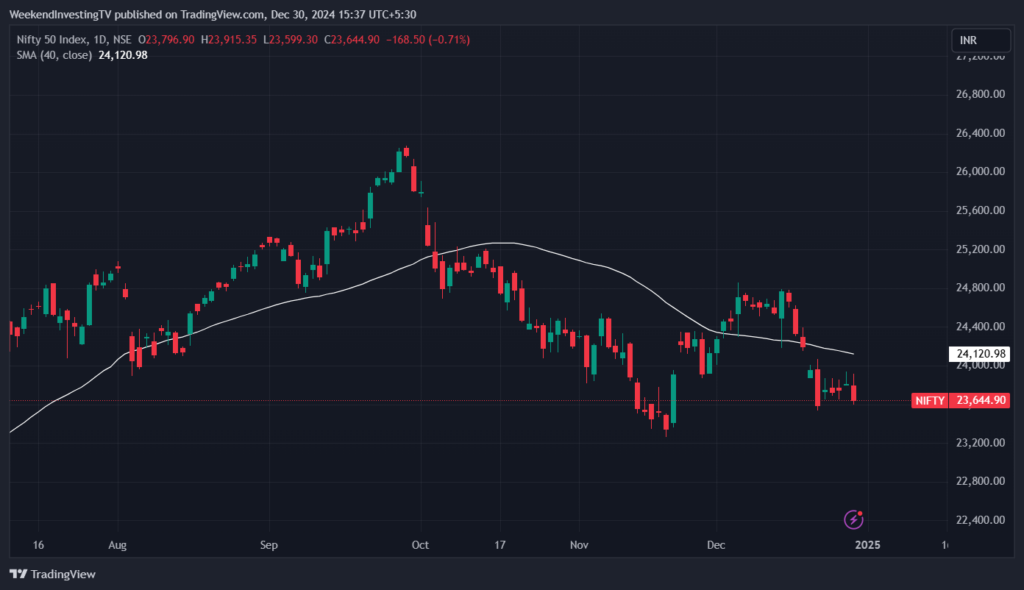
Nifty Next 50
Nifty ended the day down 0.71%. Nifty Junior has taken a bigger hit, closing the gap created in November, and has fallen quite a bit. It’s currently oversold on the RSI, which might signal that the required correction has taken place for Nifty Junior. It’s down 0.7% for the day and might now consolidate.
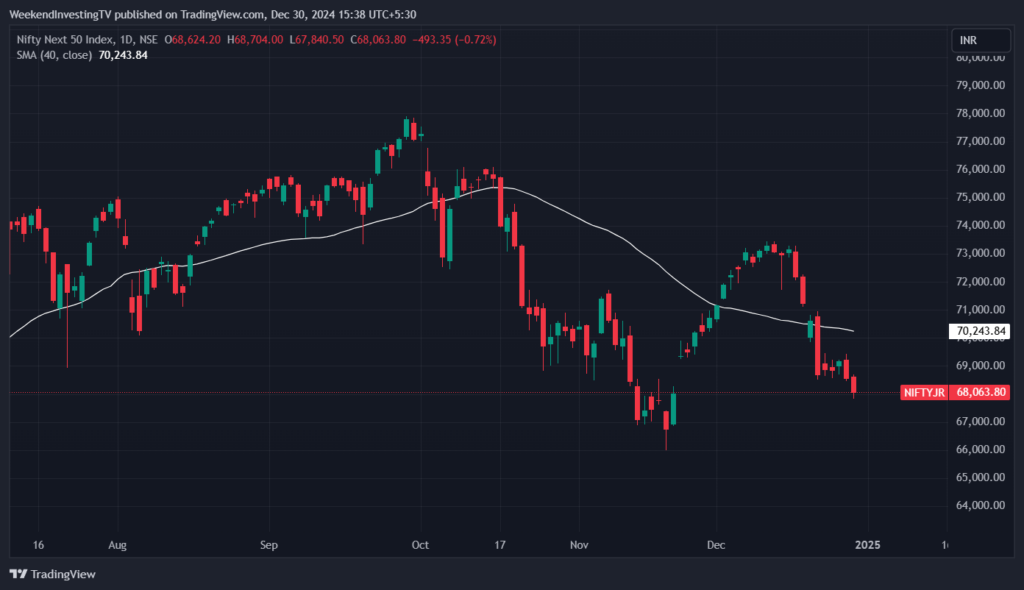
Nifty Mid and Small Cap
Surprisingly, midcaps did not participate in the fall at all. Over the last five sessions, midcaps have been almost flat, up by just 0.18%. It has failed to break below the 40-day moving average, indicating that midcaps are not inherently weak. Similarly, small caps are showing resilience, with long-legged candles being formed as they try to pull back on every dip, down by just 0.43% for the day.
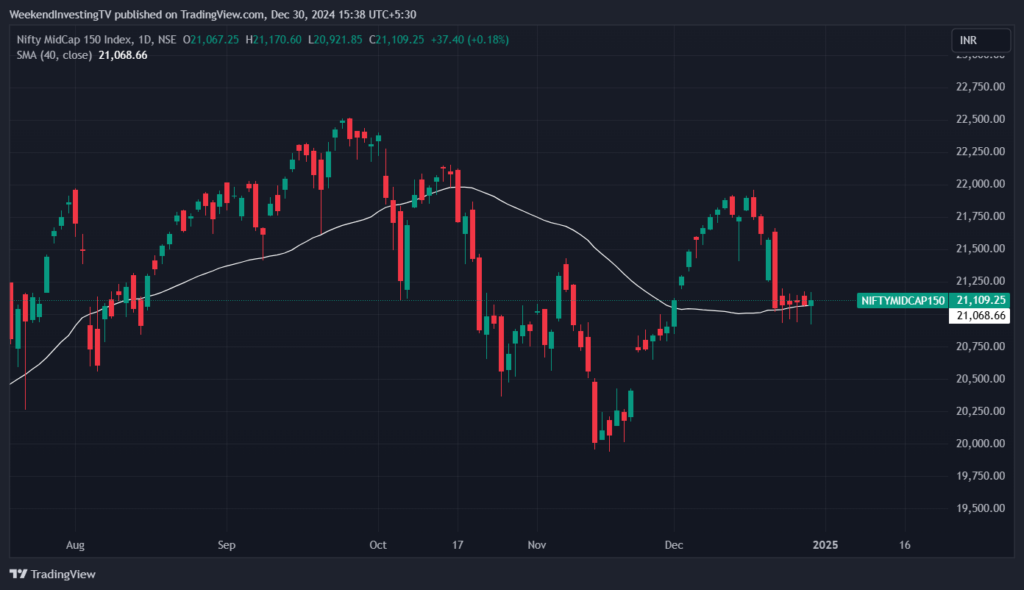
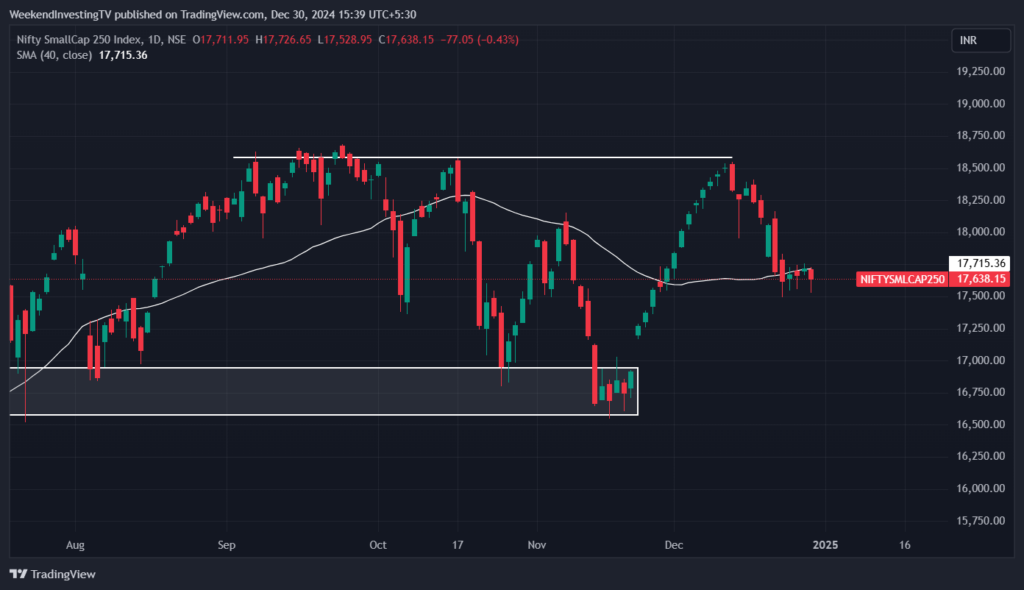
Nifty Bank Overview
Bank Nifty had a huge candle today but ended up closing the gap and coming all the way down. This is a clear indication that there are sellers on every rise in the Bank Nifty. Over the last three days, it has been hammered every time it has tried to go up. Bank Nifty ended the day down 0.7%, and it has been flat for the past six months.
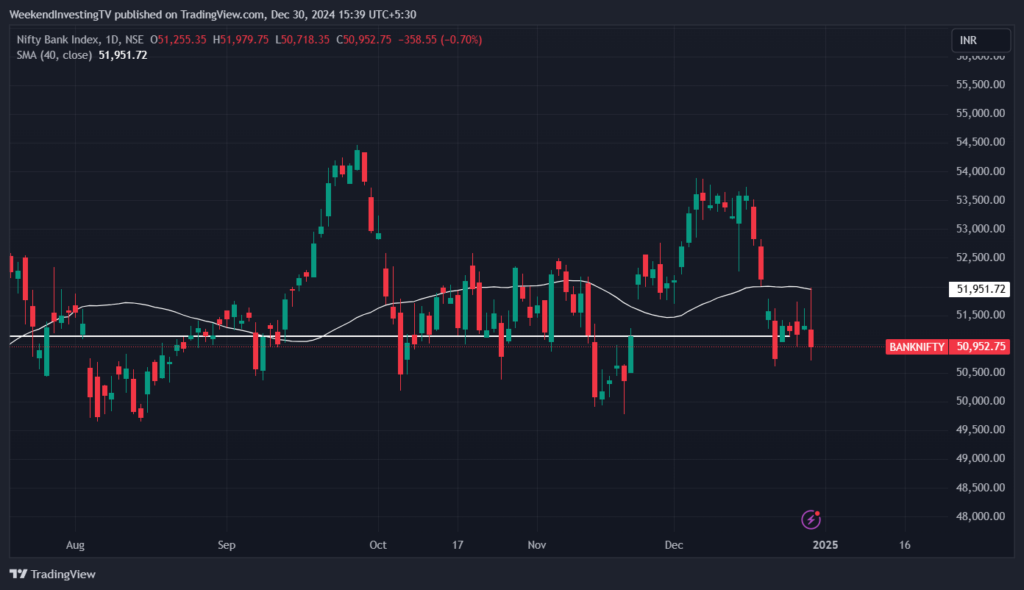
Advanced Declined Ratio Trends
The momentum trends are slightly skewed towards declines, with a ratio of 312 decliners to 187 advancers.

Nifty Heatmap
The heat map for the day was largely red, with a few exceptions. HCL Tech and Tech Mahindra saw some gains, and Adani Enterprises performed very well, possibly due to positive brokerage reports suggesting a 50% rise potential. Additionally, Adani’s sale of its stake in Adani Vilmar might have boosted the stock price. In the banking sector, State Bank of India, HDFC Bank, and ICICI Bank were among the leaders in dragging the sector down. Other large-cap stocks like Reliance, Mahindra, and Bajaj Auto were also down. On the positive side, FMCG stocks were flat for the day, and Nifty Next 50 was reasonably green, despite a 0.7% overall loss. IRFC, Bajaj Holding, Adani Group companies (Adani Green, Adani Power, Adani Total Gas) were all doing well, with some of them up by 10-11%. Somato and United Spirits also saw gains. On the other hand, stocks like VHEL, Siemens, ABB, PFC, and TVS Motors were hit hard.
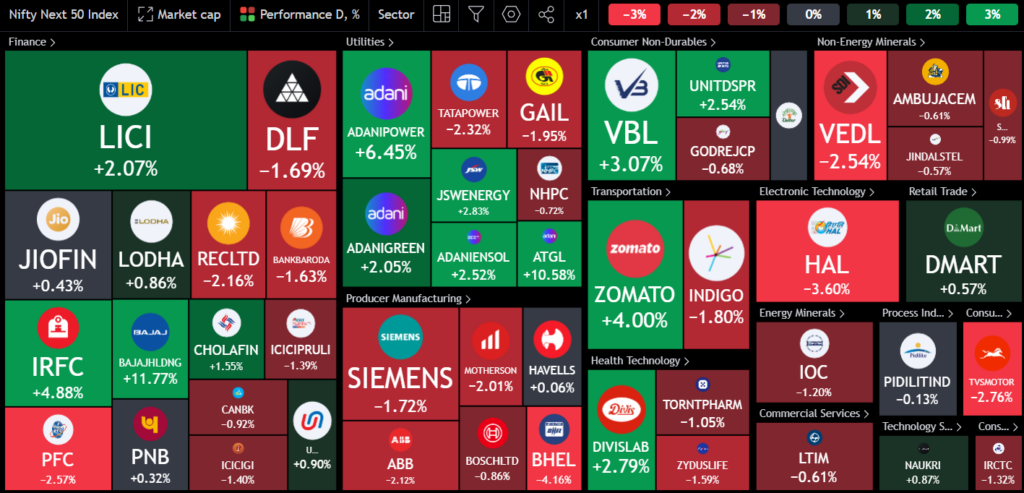
Sectoral Overview
The sectoral performance showed that Real Estate, Public Sector Enterprises, and Autos were down, with losses of 1.5%, 1.4%, and 1.3%, respectively. On the other hand, Pharma stocks, IT, and FMCG (the defensive sectors) led the market.
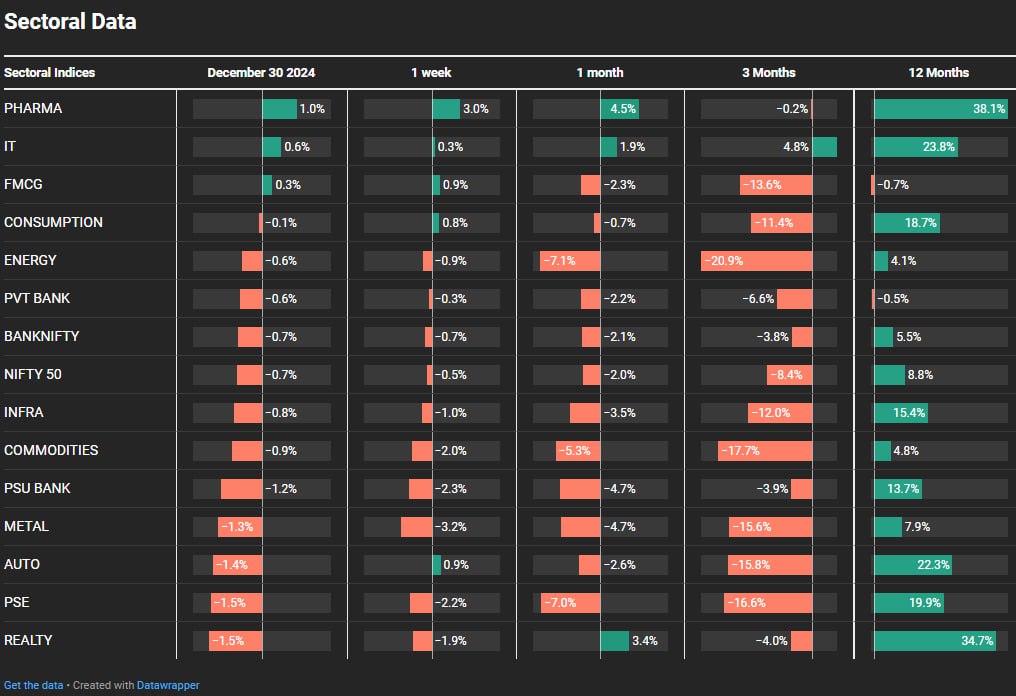
Sectors of the Day
Nifty Pharma Index
Pharma, in particular, was up 38.1% over the last 12 months, which is the highest among all sectors, reflecting the defensive positioning of the market. It’s clear that the market is in a defensive mode now, after being aggressive for the past year or year and a half. Stocks like Biocon, Lupin, Divis, Aurobindo, and JB Chemicals in the pharma space have seen good recovery from their recent lows.
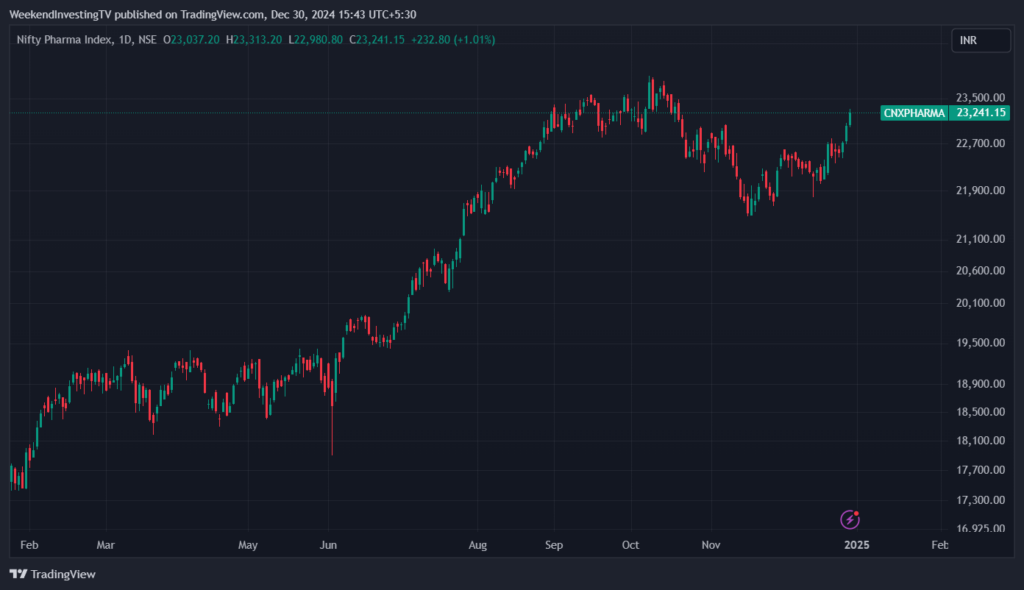
Stock of the Day
Indian Telephone Industries Limited
The stock of the day was ITI, which surged by 15%. Despite the market’s weakness since November, ITI has been making consistent moves, likely in anticipation of some allocation or divestment news in the upcoming budget. Over the long term, ITI has made a significant jump from 80 to 380 rupees over the last two years, highlighting its potential.
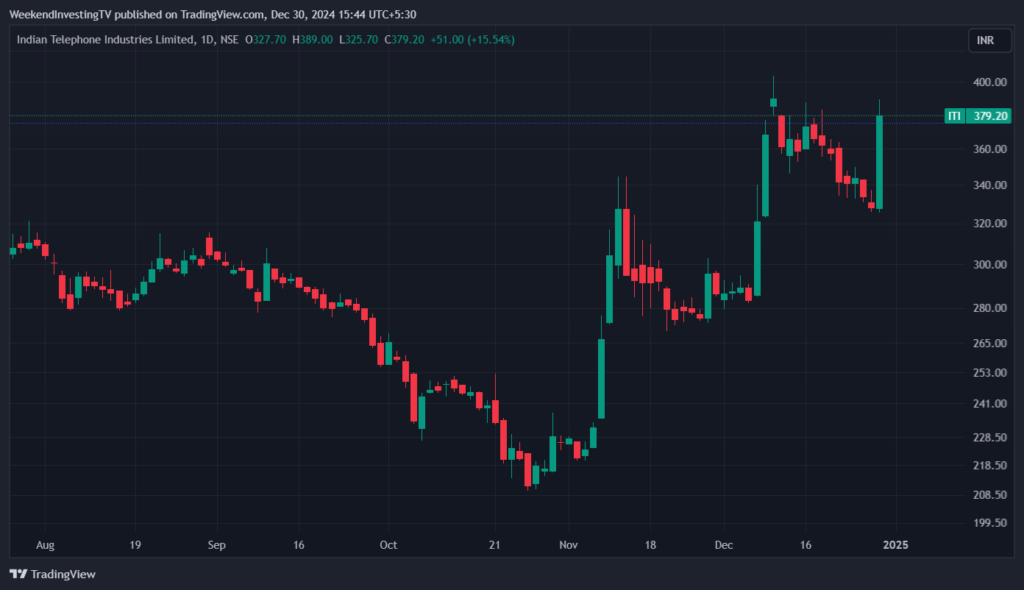
Story of the Day : Avoid while Asset Allocating
One of the most popular strategies globally is the 60:40 ratio — 60% in equities and 40% in debt. This strategy is considered a balanced approach for long-term investing and is often recommended in both India and abroad. To evaluate how this strategy has worked in the last decade, we’ve looked at the performance of different asset classes: equities (Nifty 500 total returns), debt (bond index), and gold (ETF gold bees). In the past year (2024), equity returns have been 21%, debt has returned 8.8%, and gold has given 20.7%. In the previous year, debt returned 7.3%, equity 26.9%, and gold 12.7%. Gold did exceptionally well in 2020, outperforming both debt and equities. Over the last 10 years, equities have delivered an average return of 17.3%, debt 8.3%, and gold 9.5%. Despite gold’s long bear run from 2013 to 2020, it still managed to post an average return of 9.5%.
If we rank different asset allocation strategies (e.g., 60-40, 70-20-10), we see that a portfolio with 70% equity, 20% debt, and 10% gold has performed well. Interestingly, a 60% equity and 40% debt allocation has been among the worst performers in recent years. So, based on recent trends, the 60-40 allocation has underperformed, especially as gold has boosted returns in the last few years.
Real Estate and Debt Performance
Real estate and debt have also underperformed in recent times. Bond yields have been rising since COVID, and this trend is expected to continue. When interest rates rise, bond prices fall, making bonds a less attractive investment. If this rising rate cycle continues, bonds are likely to underperform.
Looking at real estate, we can see that property prices in cities like Gurgaon have seen significant appreciation. A property that cost 15,000 rupees per square foot in 2015 is now priced at 50,000 rupees per square foot in less than 10 years. Just like with the stock market, not all real estate investments will do well, but selecting the right properties can yield good returns, just like picking the right stocks.
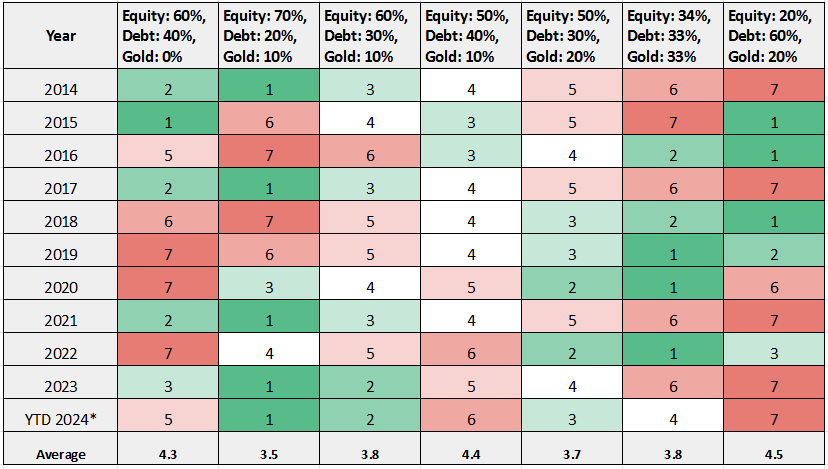
WeekendInvesting launches – PortfolioMomentum Report
Disclaimers and disclosures : https://tinyurl.com/2763eyaz



